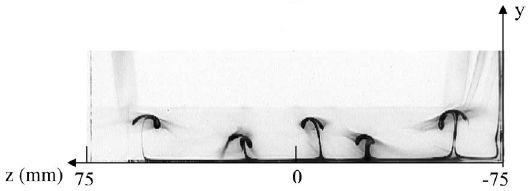Jean-Luc Aider

Flow control is a trans-disciplinary research field at the interface between hydrodynamic instabilities, automatic and experimental fluid mechanics. It is also both a very rich fundamental research field with many challenges in applied research fields. This is because there are many industrial applications where the flow is responsible of loss of performance (large drag force, thermal dissipation, vortex induced vibrations, etc) or nuisances like aeroacoustic noises. In our team we are mostly interested in flow control applied to shear flows like separated boundary layers, 3D wakes, transitional boundary layers.
As mentioned previously, controlling a flow is not straightforward and requires at least three major steps: studying the properties of the target flow, choosing an actuator and defining an objective for the control. If you want to optimize the control you will also probably turn to “closed-loop” control, which suppose the choice of at least one proper sensor as input and an active actuator for the closed-loop algorithm. Each of these steps can lead to dedicated studies which is the reason why we are very active and publish in other research fields like transition to turbulence, jet-in-crossflow or experimental techniques.
Real-Time PIV for closed-loop flow control
The choice of sensor is a crucial step. Most of the time, experimentalists use wall sensor, like wall shear sensors or wall pressure sensors. We chose to develop a dedicated real-time PIV (Particle Image Velocimetry) system, based on optical flow instead of auto or intercorrelation computations, to have access in real-time to flow characteristics in the bulk instead of their wall signatures. This is a major step-forward as it opens new roads for experimental flow control. It is also a very promising tool for experimentalists to accelerate large and tedious experimental parametric studies using PIV.
Closed-loop flow control using “visual sensor”
We carried out many closed-loop experiments using real-time PIV as sensor and pulsed jets as actuators, mostly on a Backward-Facing Step (BFS) flow. Various closed-loop algorithm were used like PID or frequency lock. We aslo developed new criteria adapted to data based on instantaneous velocity fields, like the instantaneous recirculation bubble area, which was impossible to evaluate in real-time before.
Machine Learning
We carried out the first closed-loop separation control experiment using a novel, model-free strategy based on genetic programming called “machine learning control”. The goal was to reduce the recirculation bubble of a backward-facing step flow at Reh=1350 forced by a slotted jet and optically monitored by online real-time PIV. The feedback control law was optimized with respect to a cost functional based on the recirculation area and a penalization of the actuation. This optimization was performed employing genetic programming. After 12 generations of 500 individuals, the algorithm converges to a feedback law, which reduced the recirculation zone by 80%.
Jet in Cross-Flow and free pulsed micro-jets
If you want to control a flow, you first need to control the perturbations you will use. This is the reason why we started to study the interactions between jets and an incoming boundary layer. We aslo studied the dynamics of free pulsed micro-jets which are very promising for flow control because of their small size and low consumption making their integration much easier. The interest of this research field goes far beyond flow control as it is representative of many other flows where jets interacts with a transverse flow like smoke exhausting from chimneys.
External aerodynamics and 3D wakes
One of our main interests is to apply flow control automotive external aerodynamics. Indeed, the wake of a vehicle contributes significantly to the drag coefficient and is then responsible for a large part of the fuel consumption and related pollution. Through industrial partnerships we studied the wakes of simplified vehicles models and investigated many control strategies to reduce their drag coefficients.
Forcing of shear flows
As mentioned previously, choosing the actuator is one of the crucial steps in flow control. If it is important to study the flow induced by the actuator around the actuator, it is also crucial to study the interactions between the forcing and developing boundary layer. This is the reason why we are interested in the transition to turbulence process of boundary layers forced by various perturbations like cylinder vortex generators or jet vortex generators. It leads us to more fundamental research on the inner interactions between the coherent structures at sake during the different steps of the transition to turbulence scenario.


